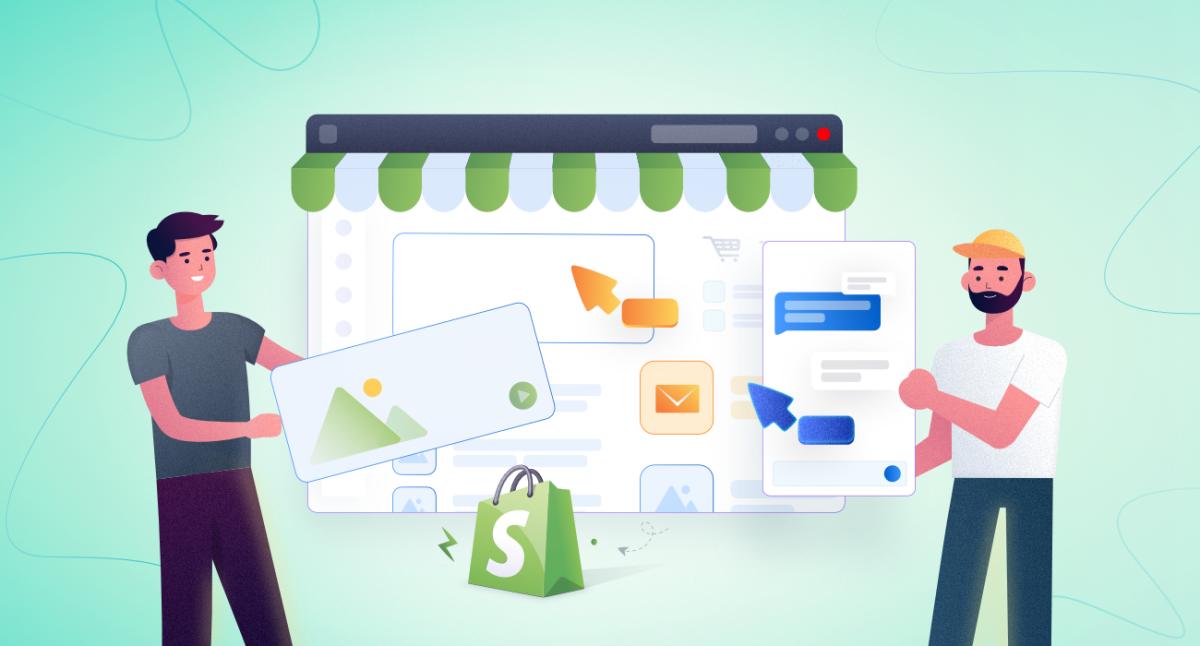A smart dropshipping marketing strategy can turn a side idea into a steady online store, but getting started feels confusing when you face product research, supplier sourcing, and ad costs. Have you struggled to pick the right niche, set up a Shopify or WooCommerce store, choose reliable dropship suppliers, or get traffic with social media ads, email marketing, and SEO? This article lays out clear, step-by-step guidance on how to start a dropshipping Business, covering niche selection, product sourcing, order fulfillment and processing, pricing, payment gateways, and conversion-focused marketing. You will get actionable tips, sample ad ideas, supplier checklists, and ways to lower shipping times while protecting profit margins and customer service. To move faster, PagePilot's AI page builder helps you create product pages and landing pages that look professional and convert, so you can focus on testing products, running Facebook and Google ads, and improving customer experience.
Summary
- Treat starting a dropshipping business as a lean experiment, validate demand quickly with a single high-converting product page and short ad tests, and remember the market opportunity is large: the dropshipping market is projected to reach USD 557.9 billion by 2025.
- Run focused validation tests for 3 to 14 days per product, measure cost per acquisition, conversion rate, average order value, customer lifetime value potential, and cart abandonment, and use those five metrics to decide whether to scale or kill a hypothesis.
- Supplier reliability is a core operational risk, with about 70% of dropshipping businesses struggling with supplier issues. Insist on samples, tracking proof, and written SLAs before advertising.
- Manual page and creative builds slow iteration, with small teams often spending days on a single product page, while industry reports show users saved an average of 5 hours per week on page creation when they automated the process.
- Profitability is arithmetic, not mystique. Successful stores report monthly revenues ranging from about $1,000 to $50,000, and a 1.5 percentage-point lift in conversion on a $50 order can match the impact of cutting ad spend by 25 percent.
- Common execution mistakes drive failure, for example, roughly 50% of dropshipping businesses fail within the first year, usually due to supplier gaps, weak funnel math, or neglected post-purchase flows, rather than market size alone.
- PagePilot's AI page builder addresses this by centralizing page creation from supplier or competitor URLs and automating image and copy variants so teams can compress page build time from days to minutes.
How to Start a Dropshipping Business

Treat starting a dropshipping business as a lean experiment: pick a narrow niche, validate demand fast with a single, high-converting product page and measured ad tests, then iterate until the unit economics work. Move quickly, protect your legal and supplier foundation, and let real customer behavior decide which offers you scale.
Why Pick a Narrow Niche, and How Narrow is Narrow?
Pick an interest you can write about without yawning at midnight. Focus on a subcategory where you can speak with authority, target ads precisely, and reuse creative assets across products. This keeps your catalog tight, cuts creative costs, and makes A/B tests meaningful. The common failure I see is founders choosing “no-competition” items because it sounds clever, only to discover that low competition usually signals low demand.
How Do You Validate Demand Without Sinking Months or Thousands of Dollars?
- Treat each product like a hypothesis.
- Launch one ad creative to one traffic source, drive visitors to a single product landing page, and measure conversion, cost per acquisition, and early repeat behavior across the first 3 to 14 days.
- Use short, focused tests to reject losers fast, and double down on winners. Think of it like lab work: small sample size, controlled variables, clear pass/fail criteria.
Which Suppliers Keep Promises?
Prioritize suppliers willing to share real lead times, sample fulfillment records, and communication availability in your language. Ask for proof of tracking, a test order, and a written returns policy before you advertise. The failure mode I watch most is slow, opaque suppliers that make early wins disappear under refund and chargeback pressure.
Automate order routing and inventory syncing where possible to prevent manual errors from eroding margins.
What Legal and Tax Steps Do Newcomers Usually Miss?
Register a business entity, set up basic bookkeeping, publish clear refund/shipping policies, and confirm sales tax or VAT obligations in your target markets. Skipping this feels like saving time, but it creates brittle risk: audits, frozen payouts, or compliance headaches that stop growth cold. Many beginners undervalue this until late, and then it becomes an expensive, morale-sapping distraction.
How Should You Acquire Customers Without Burning Your Budget?
- Start with one paid channel and one organic channel.
- For paid, run tight creative tests on a targeted audience, measure CPA versus average order value, and use retargeting to capture warm visitors.
- For organic, build one content funnel or influencer relationship that feeds your paid tests.
- Optimize the funnel: make checkout fast, reduce friction, and capture email for next-step offers. Consistency in messaging often beats a dozen random tactics.
Which Metrics Matter on Day One?
Track cost per acquisition, conversion rate, average order value, customer lifetime value potential, and cart abandonment rate. Those five numbers tell you whether your ads, page copy, pricing, and post-purchase flow are working together or fighting each other. Use these metrics to decide whether to scale an ad, tweak creative, or dump a product.
9 Proven Strategies
Most teams handle store-building like a design project because it feels professional and reassuring. That approach works early, but when validation requires dozens of quick iterations, long build cycles turn into a tax on momentum: concepts die in review threads, and ad hoc hypotheses become stale.
Platforms like AI page builder centralize page creation and launch logic with automated templates and ready-to-import ad assets, compressing validation time from days to minutes so teams can test more offers with less wasted effort.
A Practical Launch Checklist You Can Use in One Sitting
- Pick one narrow product and write a single benefit-driven value proposition.
- Order a supplier sample, confirm shipping, and set expectations with a written SLA.
- Build a one-page funnel with clear CTA and trust signals.
- Run a 3–14 day paid test with a strict CPA cap, and collect groups of visitor behaviors.
- If CPA is twice the profit margin after 14 days, kill it and move to the following hypothesis.
This is not a hobby; it’s a learning system. The market opportunity is big enough to reward speed and repeatability, and that matters: the dropshipping market is expected to reach USD 557.9 billion by 2025, according to Grand View Research. Validated winners can scale fast, and the pace of growth reinforces that testing volume matters, as the sector is projected to grow at a compound annual growth rate of 28.8% from 2019 to 2025, according to Grand View Research.
Cheap Experiments for Clear Signals
It’s exhausting when you pour months and cash into a “perfect” store only to learn the product flopped; innovative founders shrink that risk by designing cheap, fast experiments that return clear signals. Treat early launches as data collection, not commitments, and keep your burn in line with the metrics.
Disciplined Experiments and Business Model Choice
Most of the common traps are avoidable with disciplined experiments, supplier checks, and simple legal housekeeping; get those right, and you turn dropshipping from a grind into a repeatable engine for finding products that scale. This pattern works—until you must choose the business model that will shape how you test, ship, and profit, and that choice quietly decides everything that follows.
Related Reading
- Is Shopify Only for Dropshipping
- Shopify vs WooCommerce Dropshipping
- How to Start Digital Dropshipping
- Dropshipping Mistakes
- How to Succeed in Dropshipping
- Branded Dropshipping
- Ghost Dropshipping
Dropshipping Models to Choose From

Pick the model that matches the constraints you actually have, not the one that sounds coolest. Your choice will determine how much control you keep, how quickly you can iterate, and how much upfront cash you need, so match the model to your capital, timeline, and brand goals before you scale.
Which Model Lets You Launch Fastest?
Traditional dropshipping is the quickest path to market because you avoid inventory and fulfillment overhead. The tradeoff is predictable: you trade speed for control, which shows up as slower shipping, variable quality, and limited packaging options that can erode repeat purchase rates if left unchecked.
Think of it as the automatic transmission of ecommerce, helpful in getting moving but not for driving hard or owning the road.
Which Model Protects Brand and Margin?
Private label and print-on-demand let you add branding and unique creative, which increases perceived value and pricing power. Those benefits come with real constraints: minimum order quantities, longer supplier lead times when adding custom packaging, and extra design work to validate fits and sizes.
If you need reliable unit economics and want to own the customer relationship, accept that you will convert some speed into setup time and working capital.
How Do You Fix Slow or Unreliable Delivery?
Hybrid fulfillment, where you buy inventory and place it into third-party logistics centers, gives you consistent shipping windows and more reliable quality control. That improvement requires cash up front and better forecasting, because you now carry inventory risk, but it frequently lowers return rates and improves repeat purchase velocity when executed correctly. This model is often the pivot point for stores moving from testing to predictable growth.
When Does Sourcing Get Complicated Across Markets?
Reverse dropshipping, selling higher-quality goods from developed countries into developing markets, delivers a margin and prestige advantage but adds logistics complexity and higher cross-border shipping costs that can eat into profitability if you misprice or misread demand. Collaborative dropshipping, where you resell partner catalogs, multiplies operational touchpoints and often creates customer service headaches unless order routing and returns are automated.
What Do Markets and Scale Tell Us About Choosing a Model?
That choice matters more now because dropshipping is mainstream; consider that the global dropshipping market is expected to reach $557.9 billion by 2025, which raises the stakes for getting your model right as competition intensifies. At the same time, about one-third of online stores use dropshipping as a fulfillment method, so supplier bargaining power and differentiation are real levers you must manage.
Time Costs of Separated Creative
Most teams handle page and creative work like a separate design project. That works at first, but as you test more products, it becomes the bottleneck: A small team can spend days producing one product page, then another day matching creative for ads, while winning windows close.
Platforms like AI page builder centralize page creation from a supplier or competitor URL and automate imagery and copy variants, so teams move from days of manual work to minutes of validated creative that imports directly into ad tests.
What Should You Watch for Operationally?
Monitor these failure modes, and treat them like early warning lights: long supplier lead times that exceed your posted shipping promise, fragmented order flows when partners change fulfillment responsibility, and rising return rates tied to poor fit or misleading visuals. When one of these pops, it usually points back to either a supplier you trusted without samples or an operations process that was never automated.Choosing a model is like picking the right tool for a repair job, not the fanciest tool in the box: the wrong one wastes time and money, the right one gets you back on the road fast.
Fast Testing and Visual Upgrade
PagePilot’s AI page builder will help you test products, angles, and visuals far faster than manual page builds; give the AI a competitor or supplier URL, and it will create a high-converting product page from that information while also upgrading product visuals with the AI Product Image function.
Start a FREE Trial and generate 3 product pages for free today, no credit card needed. That choice looks tactical now, but it quietly decides whether your tests scale or stall.
Is a Dropshipping Business Profitable?

Yes, dropshipping can be profitable, but it is not automatic. You make money when customer acquisition costs, returns, and supplier reliability all align with a strong conversion funnel and repeat purchase mechanics; miss any of those, and the margin evaporates quickly.
What Actually Moves Profit in Dropshipping?
Profit is arithmetic, not mystique. The levers are clear: conversion rate on your product page, average order value, ad cost per acquisition, refund and return rates, and fixed overhead, such as apps and subscriptions. Small changes matter; for example, a 1.5 percentage-point lift in conversion on a $50 average order is the same as cutting ad spend by a quarter, so the smartest wins come from tightening funnel efficiency before throwing more ad budget at the problem.
Is a Realistic Beginner Target Like $1,000 Per Month Achievable?
Yes, and the evidence is straightforward: successful dropshipping stores can generate a revenue of $1,000 to $50,000 per month according to Drop Ship Lifestyle, which means modest, repeatable wins do scale.
That range only becomes yours when you control customer acquisition economics and supplier risk; otherwise, revenue can look healthy while profit is negative, which feels like running on a treadmill that’s burning your cash.
Why Does Everyone Suddenly Care About Dropshipping?
Because the model is mainstream, and that matters for both opportunity and competition, with around 27% of online retailers using dropshipping as their primary fulfillment method. As more merchants adopt the same fulfillment pattern, supplier differentiation and creative excellence become the real differentiators, not the fact that you avoided inventory.
What Commonly Breaks Profitability?
Pattern recognition from dozens of launch cycles shows three failure modes repeat: unstable suppliers that drive refunds, creative that ages fast and inflates CPA, and underpriced shipping that eats margin after purchase. These are operational problems with emotional consequences; founders I work with call it exhausting to see a winning creative fade because fulfillment or returns undo weeks of growth.Most teams keep doing the same page-build and creative loop because it feels controlled, but that familiar approach has a hidden cost: it slows iteration, fragments assets, and lets ad tests age out before you optimize.
Solutions like PagePilot centralize page generation and produce ready-to-import ad variants, cutting page build time from days to minutes and letting teams test more offers while keeping creatives refreshed and consistent.
How Do You Scale from One Profitable Product to Many?
You add repeatability, not more ideas. Tighten handoffs so supplier SLAs and order tracking are non-negotiable, automate post-purchase flows to capture emails and drive a second purchase, and treat creative refreshes as scheduled tasks with measurable goals. Think of scaling like plumbing: once the first pipe is sealed, you can add branches; if it leaks, every branch magnifies the loss.
Funnel Math and Creative Velocity
Profitability is achievable, but it requires disciplined attention to funnel math, supplier contracts, and creative velocity. That’s the operational truth behind the glossy success stories, and it explains why many stores plateau despite decent traffic. The frustrating part? This isn’t even the most complex piece to figure out.
Related Reading
- Facebook Ads for Dropshipping
- Ghost Dropshipping
- SEO for Dropshipping
- Google Ads for Dropshipping
- Organic Dropshipping
- How to Make Tiktok Ads for Dropshipping
- How to Start Dropshipping Business
9 Common Dropshipping Business Mistakes to Avoid

Most common dropshipping mistakes are avoidable if you treat the work like an operating system, not a get-rich shortcut: unrealistic expectations, legal missteps, supplier blind spots, sloppy pricing, and a broken post-purchase experience are the usual culprits. Fix the decision points that cause repeated losses, and you turn volatility into repeatable improvement.
1. Why Do So Many Founders Expect Instant Profits?
When you expect overnight success, you under-invest in the time and iterations needed to tune creative, landing pages, and funnel math. That mindset shows up as chasing top-of-funnel clicks without improving conversion, then doubling ad spend when the underlying page still converts at single digits.
It feels urgent and humiliating when ad spend climbs and returns shrink; treat early months as measurement, not reward, and set stop-loss rules for tests so you cut losers before they become morale-sapping experiments.
2. How Much Does This Really Cost You?
Practically everyone underestimates the failure rate when they skip rigorous validation, which is why about 50% of dropshipping businesses fail within the first year. Fathershops frames that lose as an execution problem, meaning the fix is discipline: quicker hypothesis tests, fixed CPA limits, and shorter decision windows.
3. What Legal Mistakes Quietly End Stores?
Listing trademarked goods without clear reseller rights is not a minor risk; it can trigger:
- Takedowns
- Frozen payouts
- Liability
If you cannot document permission, switch to generic or white-label products and get basic reseller agreements in writing. Also, register your business and set up bookkeeping in the first 60 days, because governance errors compound: they stall payouts, complicate refunds, and make refunds feel like surprise penalties rather than routine ops.
4. Why Do Suppliers Break Your Business More Often Than You Think?
The failure mode is predictable; it happens when teams rely on a single supplier for core SKUs and accept verbal promises as guarantees. That problem is widespread, which explains why around 70% of dropshipping businesses struggle with supplier reliability issues. Zopi Help Desk shows this is an operational bottleneck, not a random event; redundancy and SLAs reduce refunds and protect margins.
5. What Operational Practices Stop Supplier Failures in Their Tracks?
Treat suppliers like partners with measurable obligations. Negotiate basic SLAs that include max lead time, sample quality criteria, and penalty terms for repeated misses, then automate order routing so backup vendors take over when thresholds are exceeded.
In the first 90 days, run scheduled test orders and reconcile tracking against promised windows, because the moment you see a pattern of late deliveries, refund and chargeback risk will climb faster than you can react.
6. Are You Pricing to Win or to Survive?
Aggressively slicing prices to win clicks destroys perceived value and margins. Price like a store that expects repeat buyers: bundle to raise average order value, add low-cost upsells that increase basket size, and present shipping transparently so customers do not feel tricked at checkout.
A one percentage point lift in conversion often outperforms slashing prices by 10 percent, so prioritize page messaging and trust signals over race-to-the-bottom discounts.
7. What Happens When You Ignore Reviews and Post-Purchase Care?
Ignoring feedback turns satisfied prospects into vocal critics and converts early hiccups into lasting reputational damage. Build a small, automated reviews workflow that triggers an outreach 10 days after delivery, captures NPS, and routes critical issues into a quick-claims process that either issues a partial refund or initiates a free return.
That simple loop reduces negative reviews and shortens the time between first sale and potential second sale.
8. Why Do Site Structure Problems Matter More Than You Expect?
Slow checkouts, broken mobile flows, and weak trust signals raise abandonment at the exact point you paid to acquire the visitor. Measure technical KPIs like time to first byte, mobile checkout completion rate, and payment failure rate over the first 7 days after launch. Fixing a single bottleneck, for example, replacing a buggy payment plugin, can lift conversion enough to change a test from loss-making to profitable without increasing ad spend.Most teams build product pages manually because it is familiar and feels low risk. That works initially, but as you run more tests and refresh creatives, manual pages fragment into inconsistent experiences and long review cycles, wasting time and introducing errors.
Solutions like AI page builder centralize page creation, automate imagery and copy variants, and provide ready-to-import ad assets, compressing page build time from days to minutes while keeping creative consistent as you scale.
9. How Do Cognitive Mistakes Sabotage Good Plans?
Sunk-cost bias and chasing vanity metrics are silent killers. I’ve seen founders keep a losing ad set running for three weeks because they could not accept the sunk spend, and that reluctance doubled the loss. Set clear metric thresholds before launch, enforce them with automation where possible, and use short, objective post-mortems to turn each failure into a checklist item rather than a moral defeat.
A Short Analogy to Make This Concrete
Think of a dropshipping store like a sailboat race, not a parade. You adjust sails constantly, watch wind shifts, and patch tears between legs; you do not erect a bigger mast and hope for luck. Operational discipline wins more races than flashy launches.That solution sounds neat, but what actually changes when you make these fixes becomes visible only after the next round of tests.
Start a FREE Trial and Generate 3 Product Pages with Our AI Page Builder Today
I understand why founders hold back, concerned that AI-generated pages could introduce security gaps or subtle malfunctions, and how that caution can stretch testing from days into weeks, slowing momentum. Platforms like PagePilot enable teams to validate generated pages through quick live tests and versioned rollbacks.
Users report tangible results: 90% experienced increased conversion rates, and teams saved an average of 5 hours per week on page creation, making PagePilot a powerful tool to accelerate safe, repeatable product tests.
Related Reading
- How to Make Ads for Dropshipping
- What Should I Name My Dropshipping Store
- Google Trends Dropshipping
- Best Dropshipping Video Ads
- How to Automate Shopify Dropshipping
- Dropshipping Keyword Research
- How to Drive Traffic to Shopify Store
- Branding Dropshipping






